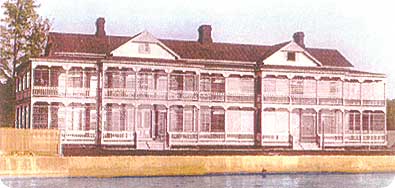In 1944, Harry Truman ran as the vice presidential candidate on the Democratic ticket with President Franklin Roosevelt. He was sworn in on January 20, 1945. Just 82 days later, he became the 33rd president when Roosevelt died suddenly. In his new role as the President of the United States, he helped oversee the end of World War II and usher in the new postwar world. Many of his actions were governed by agreements made at the Potsdam Conference, where the leaders of the Big Three nations, the United States, Great Britain and the Soviet Union, outlined the occupation and rebuilding of Europe.
The Truman Doctrine
Truman’s first year in office also saw an increasingly strained relationship with the Soviets. The USSR was overseeing the installment of several pro-Soviet governments in many of the countries that it occupied after the war. The U.S. and its western allies sought a policy of containment that would stop the spread of communism. What came to be known as the Truman Doctrine was first announced before a joint session of Congress on March 12, 1947. A month earlier, the British government had informed the White House that it could no longer support Greece and Turkey in their struggles against communism. In his dramatic speech, the president asked that the country assume that role and aid the two embattled nations of Europe. Truman proposed that it must be the policy of the U.S. to support free people resisting subjugation from internal and external threats. To help the rest of Western Europe recover from the ravages of war and further the policy of containment, Truman implemented the Marshall Plan, a U.S.-led relief package, in 1947.
The Beginnings of an Alliance
The following year saw numerous major geopolitical developments. In March 1948, several western European allies signed the Treaty of Brussels. The members included Belgium, France, the Netherlands and Great Britain. In April, the Soviets mounted the Berlin Blockade. This led to the creation of a military agency known as the Western Union Defense Organization in September. The Berlin Blockade also convinced leaders in the U.S. that the Soviet Union was planning to extend its power and influence into other parts of Europe. Support for a postwar military alliance began to grow. It would combine Western European defense with America’s policy of containment.
The Founding of NATO
The countries of Western Europe were amenable to a mutual defense agreement that also included the U.S. and Canada. Secret meetings were held at the Pentagon in March 1948 to negotiate the terms of the trans-Atlantic pact. These meetings led to the formal creation of the North Atlantic Treaty Organization (NATO). Delegates from 12 nations attended a meeting chaired by U.S. representative Theodore Achilles. The treaty was signed on April 4, 1949 to deal with future Soviet aggression against Western Europe. It was the first peacetime military alliance overseen by the United States.
Along with the U.S. and Canada, the original members were Belgium, Denmark, France, Iceland and Italy as well as Luxembourg, the Netherlands, Norway, Portugal and Great Britain.
The goal of the organization, also known as the North Atlantic Alliance, was to safeguard freedom and a common heritage by promoting stability and well-being in the North Atlantic region. To block Soviet expansion into Western Europe, each member nation pledged to come to the assistance of any member nation if attacked. The NATO agreement formalized the multinational pact that was built on the foundation of American foreign policy created by the Truman Doctrine, which implied American support for nations threatened by Soviet communism. Shedding its longstanding tradition of isolationism, the U.S. formally tied its safety and security to that of Europe for the first time.
The Treaty Becomes Law
During the signing ceremony in an auditorium near the White House on April 4, 1949, President Truman stood beside Secretary of State Dean Acheson when he signed on behalf of the U.S. Just before the event, Truman told the audience that the pact was an attempt to create a shield against aggression that would enable governments to concentrate on achieving a fuller, happier existence for their citizens. The treaty was sent to the Senate for consideration, which ratified it after a lengthy debate. Truman officially signed the North Atlantic Treaty on August 24, 1949.
